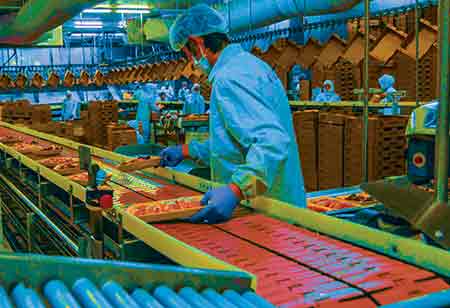Thank you for Subscribing to Food Business Review Weekly Brief
- Home
- Topics
- Alternative Proteins and Plant Based Food
- Beer and Wine
- Canned Beverages
- Coffee And Tea
- Food and Beverage Consulting
- Food and Beverage Financial Service
- Food And Beverages Marketing
- Food Distributors
- Food Ingredients
- Food Sustainability
- Plant Based Food and Beverages
- Seafood Suppliers
- Supplement Manufacturing
- Wine Investment
- News
- Vendor Viewpoint
- CXO Insights
- Conferences
- Newsletter
- CXO Awards
-
Important New Technologies That Poultry Farming Industry Must Adapt

By
Food Business Review | Monday, February 07, 2022
Stay ahead of the industry with exclusive feature stories on the top companies, expert insights and the latest news delivered straight to your inbox. Subscribe today.

The poultry farming industry is taking a shot to adopt new technologies to meet consumers' increasing demand.
FREMONT, CA: Researchers estimate that chicken meat consumption will exceed pork by 2022. As a result, the demand for chicken is escalating every day and meeting the requirements, and the poultry farming industry has to accept creative and innovative ideas.
Following are some of the top three innovative ideas that the poultry farm or factory can use.
1. Augmented Reality (AR)
Augmented reality technology can be used in poultry processing in several procedures. Georgia Tech has been researching two systems at their processing plant recently. The first plant is a location-referencing, head-mounted unit that guides trimmers, showing where and how the user can prepare a bird on their screen.
The second technology uses a laser scanner in a fixed area but near the line to the project to deliver instructions directly on the project.
Furthermore, consumers can also use AR to collect information regarding the source and food procedures.
2. Virtual Reality (VR)
Virtual Reality can train the line workers about how they can trim meat, check the animals, and even walk a horse without disturbing the birds.
It also provides consumers a virtual tour of the facility or a line and promotes transparency. Curiously, VR headsets can be located on the chicken with which they can enjoy a free-range life.
3. Egg sexing
The farmers were required to incubate and hatch some eggs to replace laying hens. Still, it is impossible to sex the eggs before hatching, but the male egg is set and hatched due to the usage of this procedure.
A new technology renowned as SELEGGT has been formed to overcome the issue. The technique examines a tiny drop of fluid from the egg to check the sex of the chick that will grow from the egg. Then, the male eggs are separated and used as a resource for feed.






